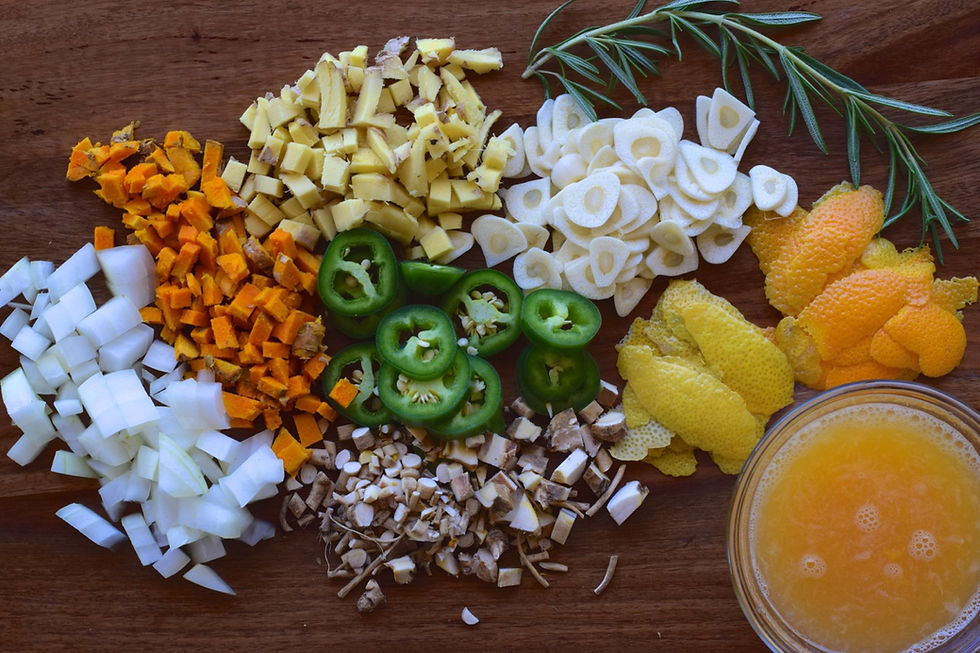FRUIT SCRAP VINEGAR
- Preserved
- Aug 8, 2020
- 2 min read
Updated: Mar 22, 2024
Many cultures have a long history of making this rustic style of fruit vinegar using fruits like berries, figs, persimmons, pears and apples. Pineapple is one of the most common vinegars in both Mexico and Central America, as well as in Southeast Asia. While you can make this vinegar with just fruit scraps (peels and cores) as intoned in its name, it’s nice to include a combination of the flesh of the fruit for a brighter and more balanced flavor. This vinegar is typically not as strong as a traditional vinegar due to the addition of water.
INGREDIENTS
~2 cups of fresh fruit or fruit scraps (the peels, flesh, and/or cores), cut into small pieces
1/4 cup sugar
1/4 cup raw, unpasteurized vinegar or vinegar mother culture (optional but recommended)
Filtered water
In a quart sized jar, add the fruit and sugar. Mash fresh fruit, to extract their natural juices. Cover with water and pour in the "mother" vinegar. Cover the mouth of the vessel with muslin cloth secured with a rubber band to keep out pests like fruit flies.
Stir once a day for the first week, at which point the natural yeasts on the skins of the fruit will start to ferment the sugars into alcohol. Let the fruit ferment for another week, stirring occasionally. It should be bubbling lightly as the yeast ferment the sugars into ethanol and release CO2.
Remove the muslin cloth, strain out the fruit solids, and add the liquid back to the jar, covered with muslin cloth, to ferment into vinegar for 3-4 weeks.
After 3-4 weeks, a new SCOBY may have formed on top. Remove the SCOBY and strain the finished liquid through muslin cloth. Transfer into airtight bottles and store in a cool, dark cabinet. Reserve a portion of your finished vinegar along with your SCOBY (optional) to start a new batch using the same recipe described above.





